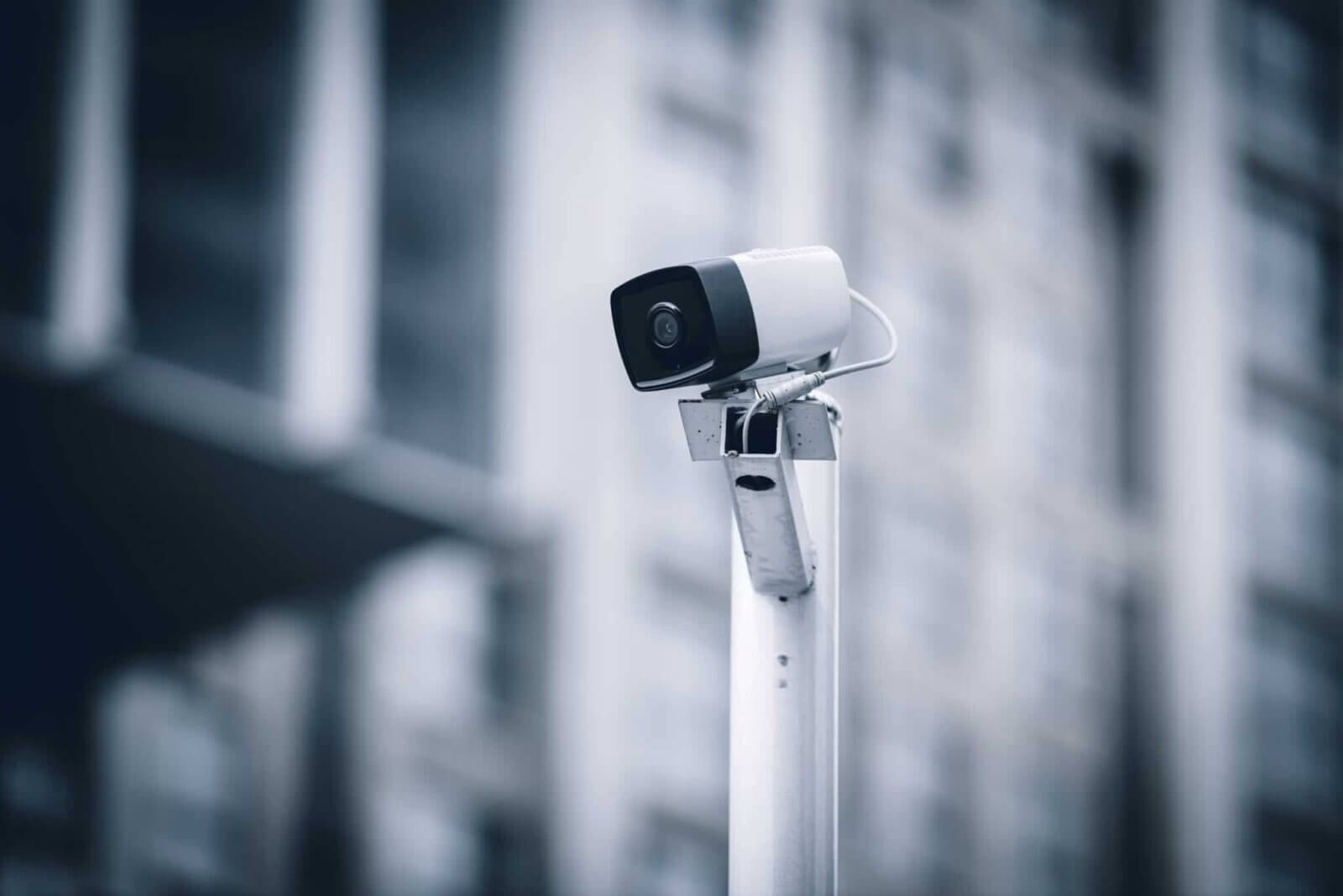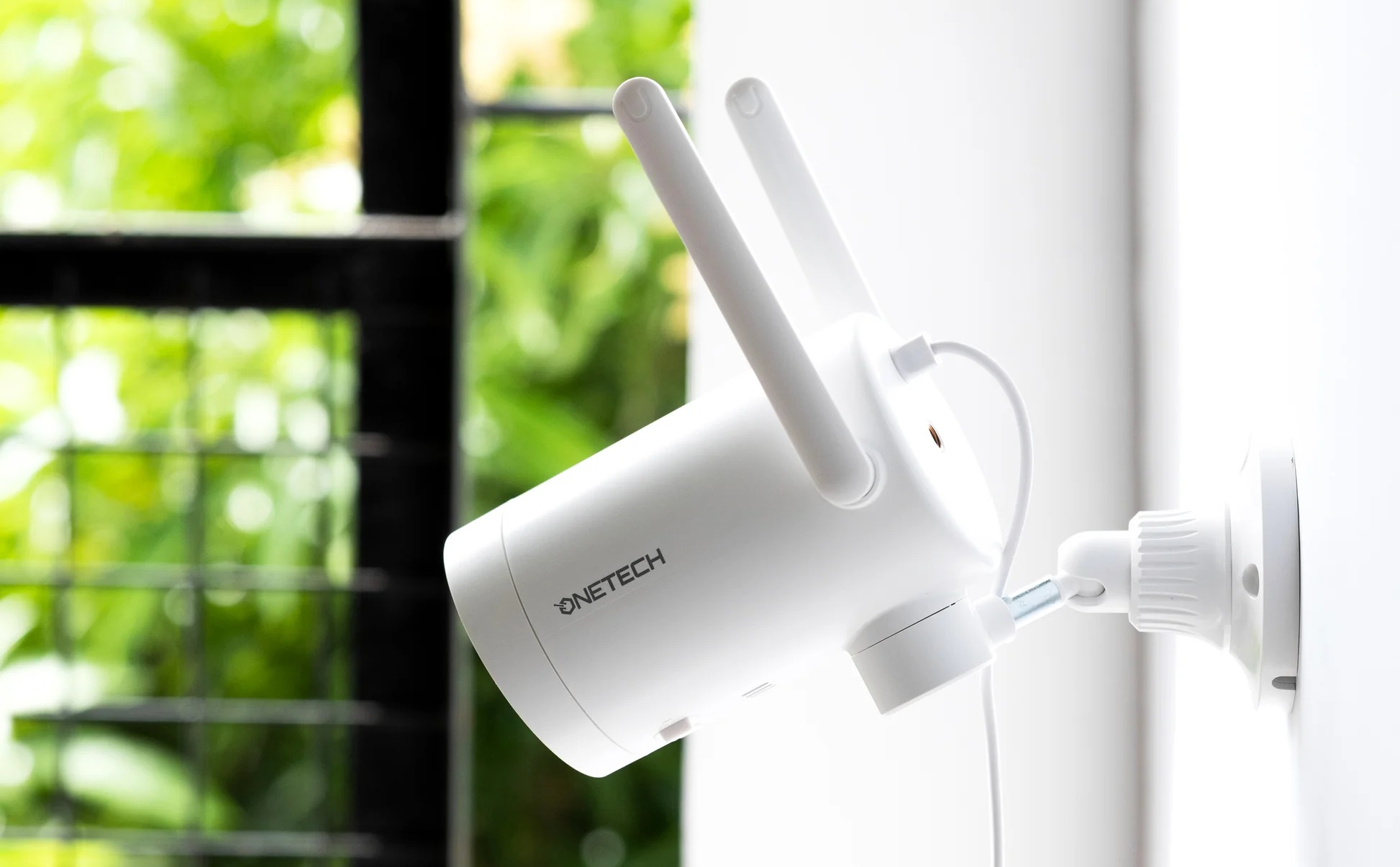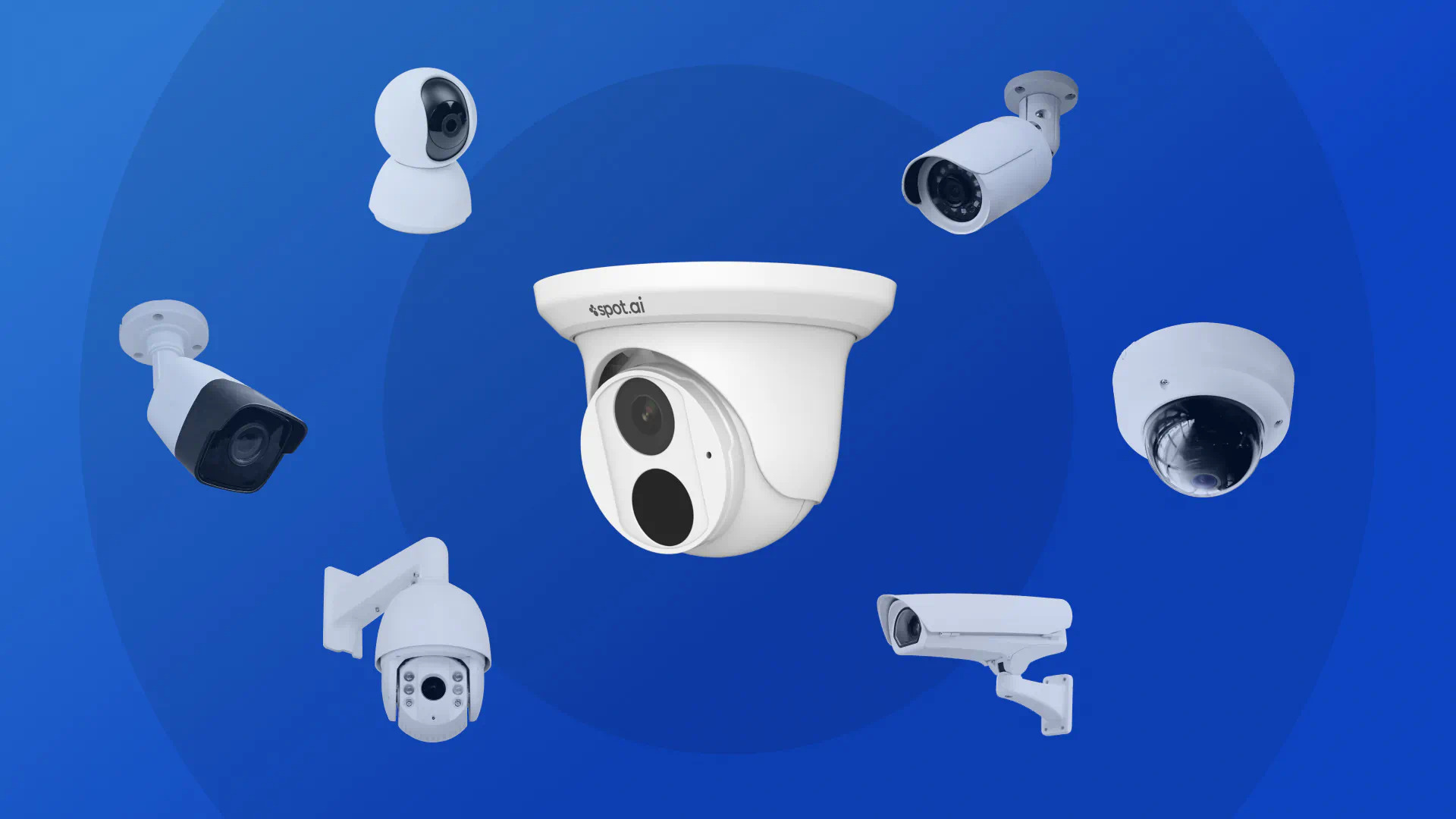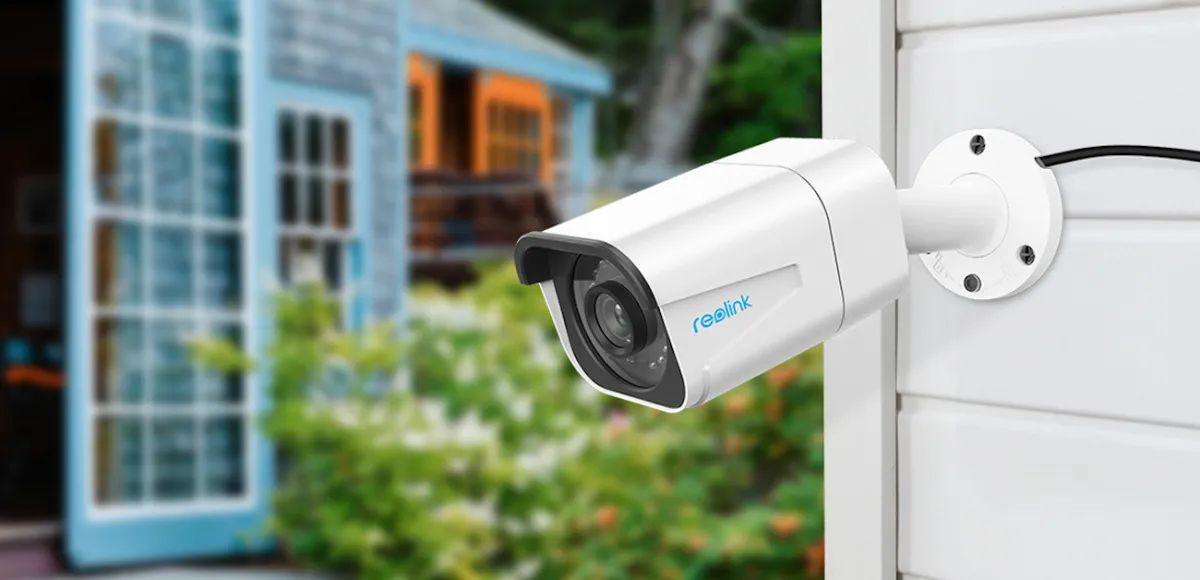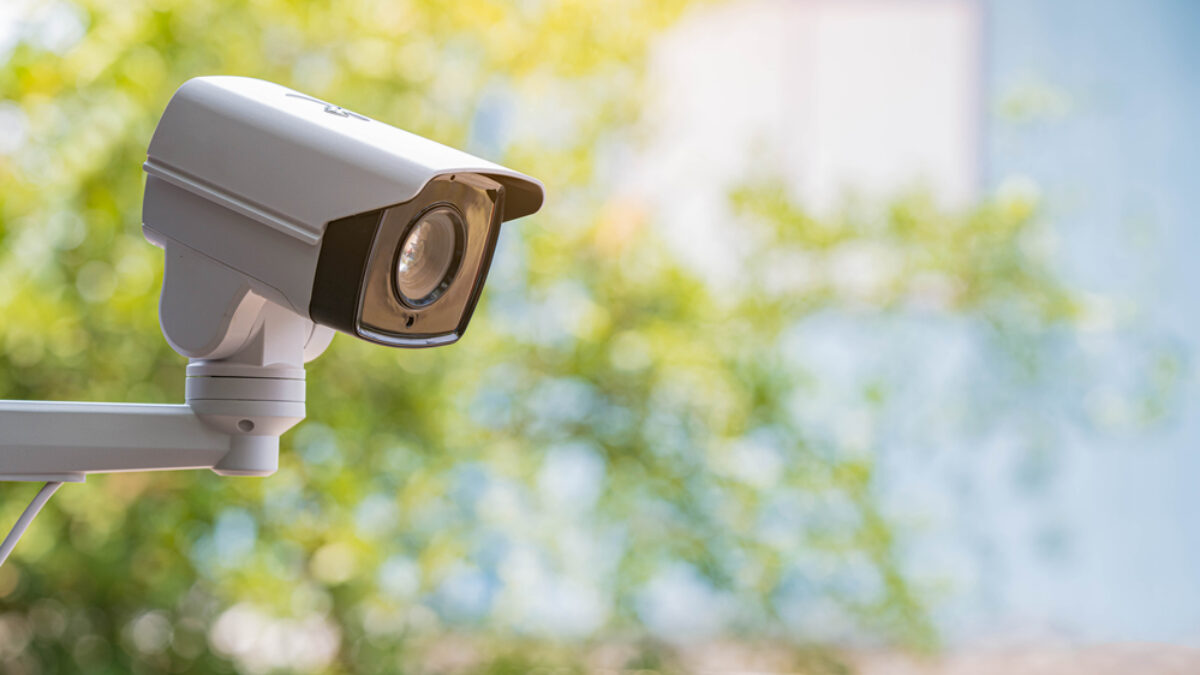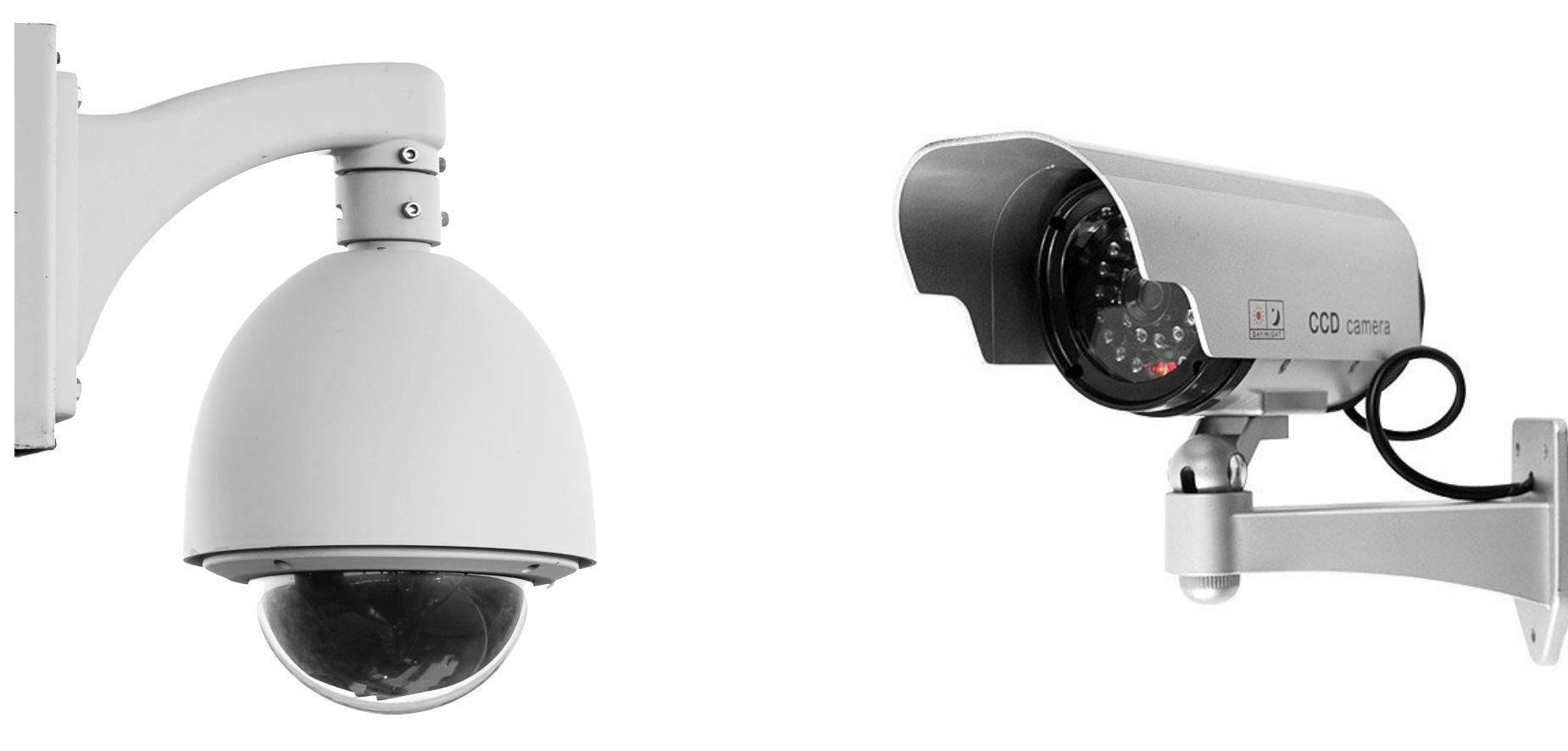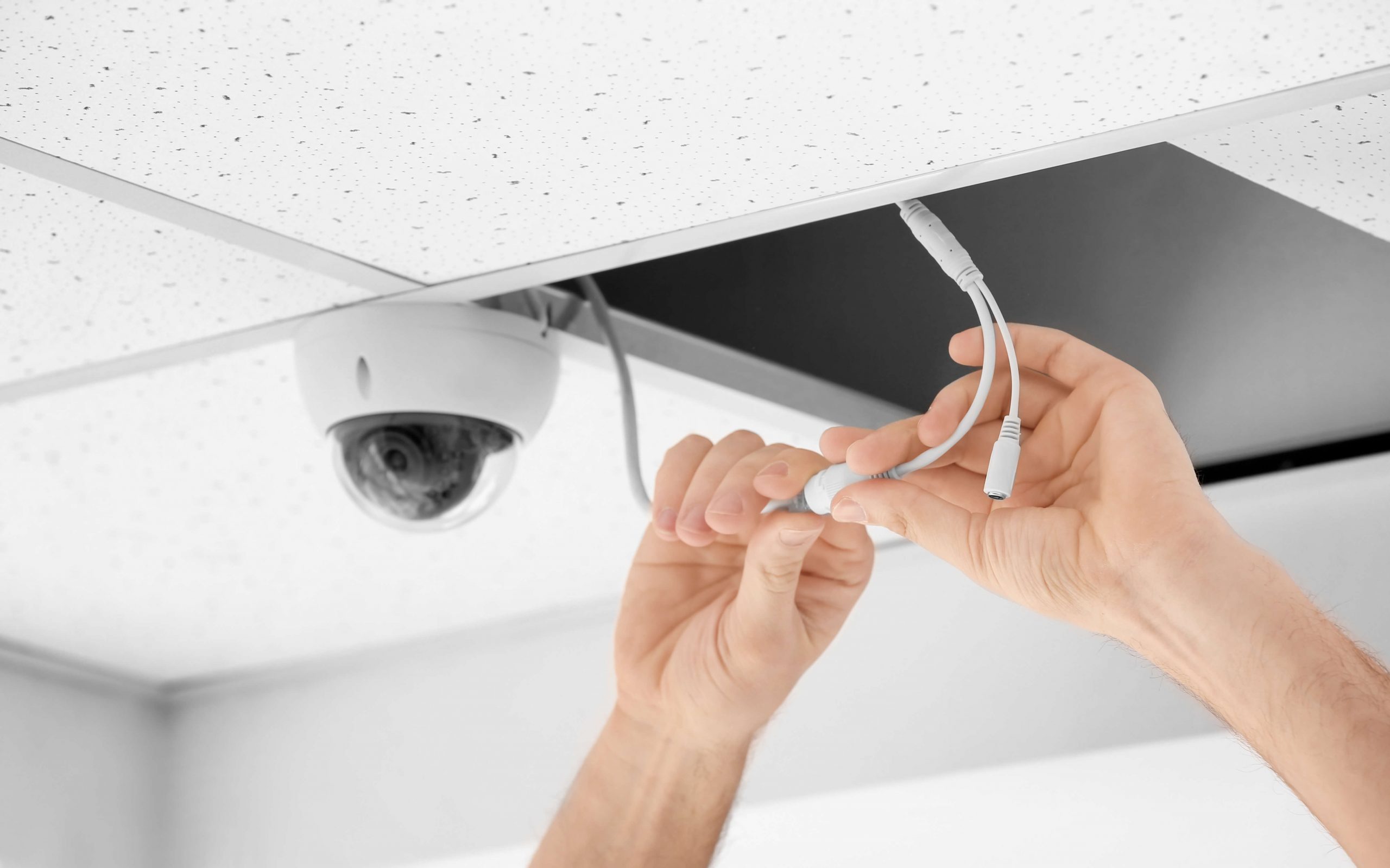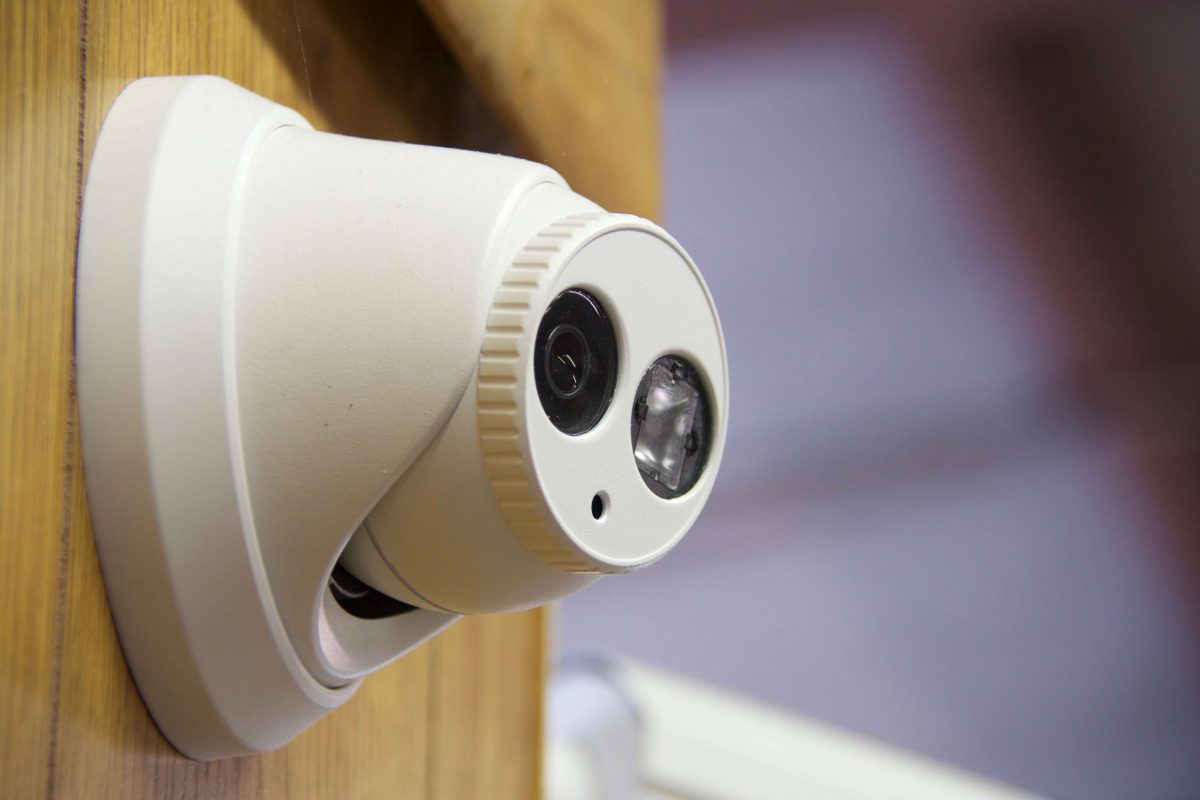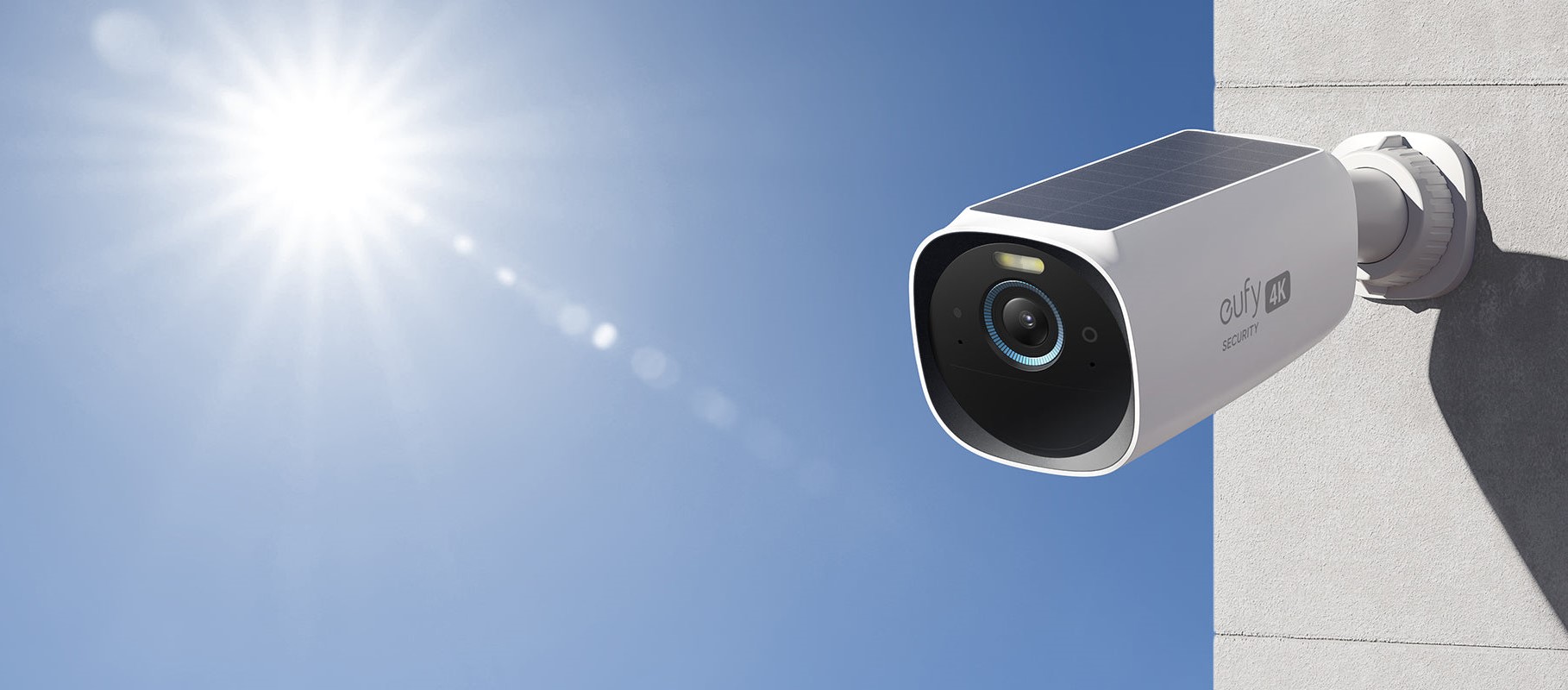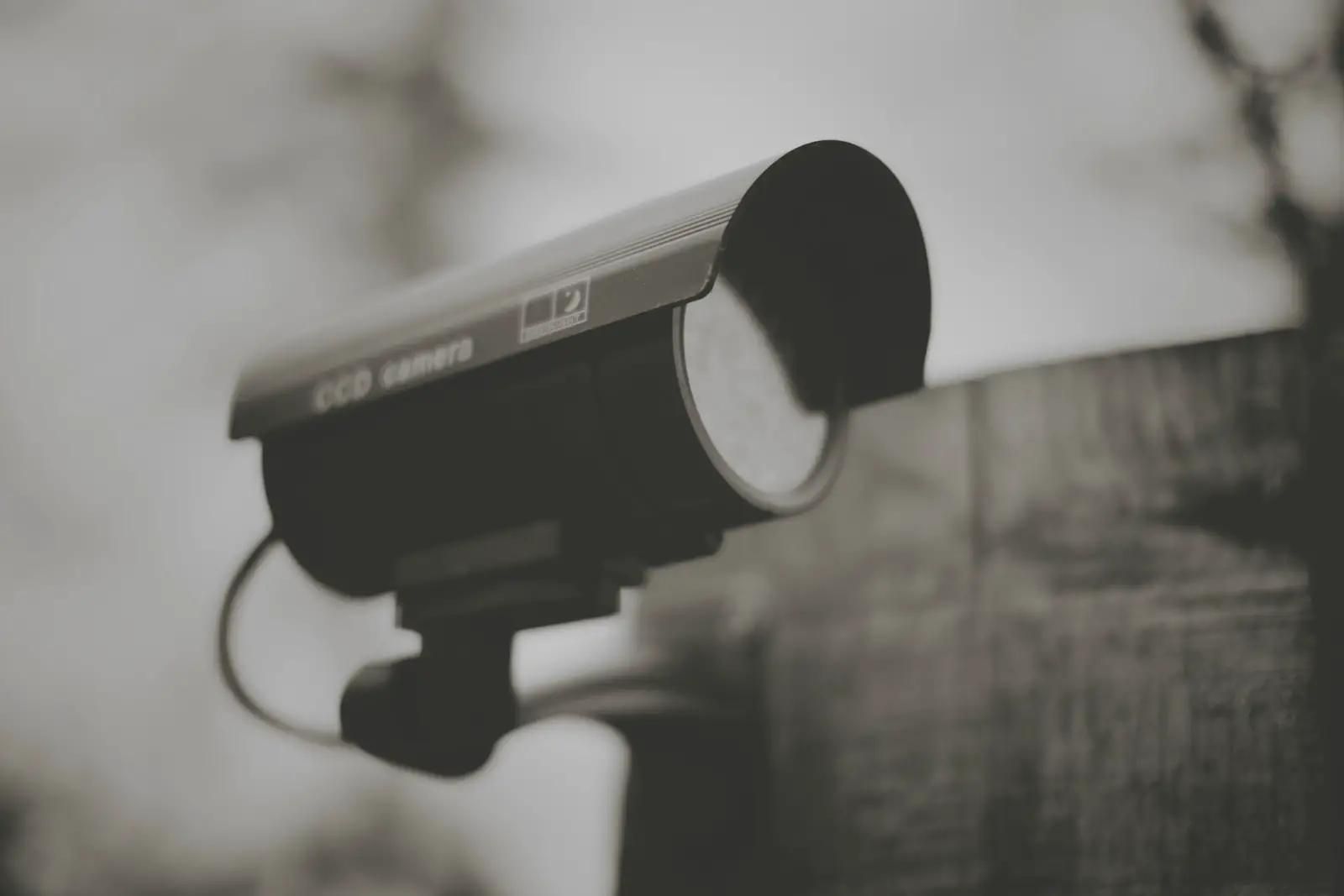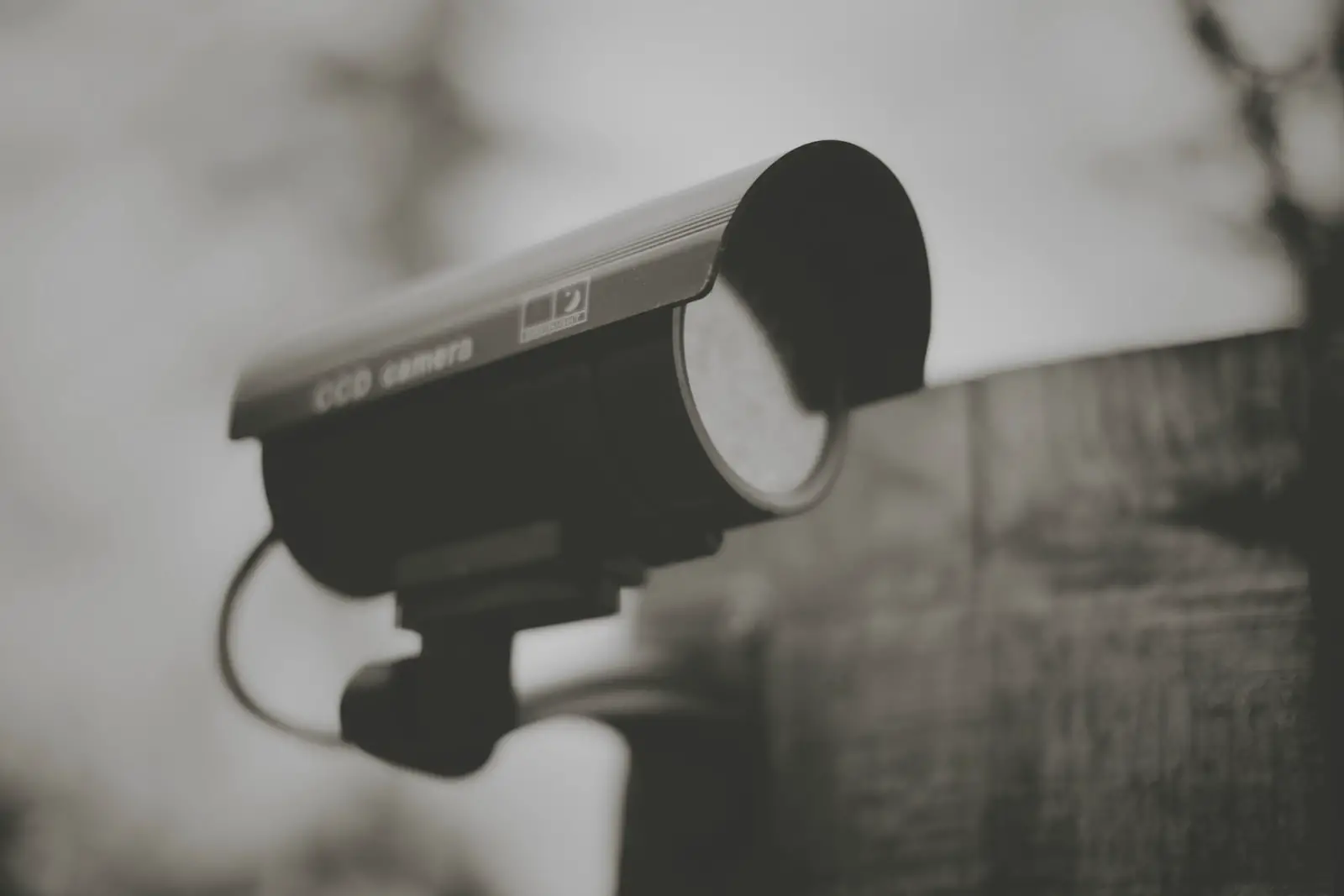Home>Home Security and Surveillance>How To Hack Into Security Cameras
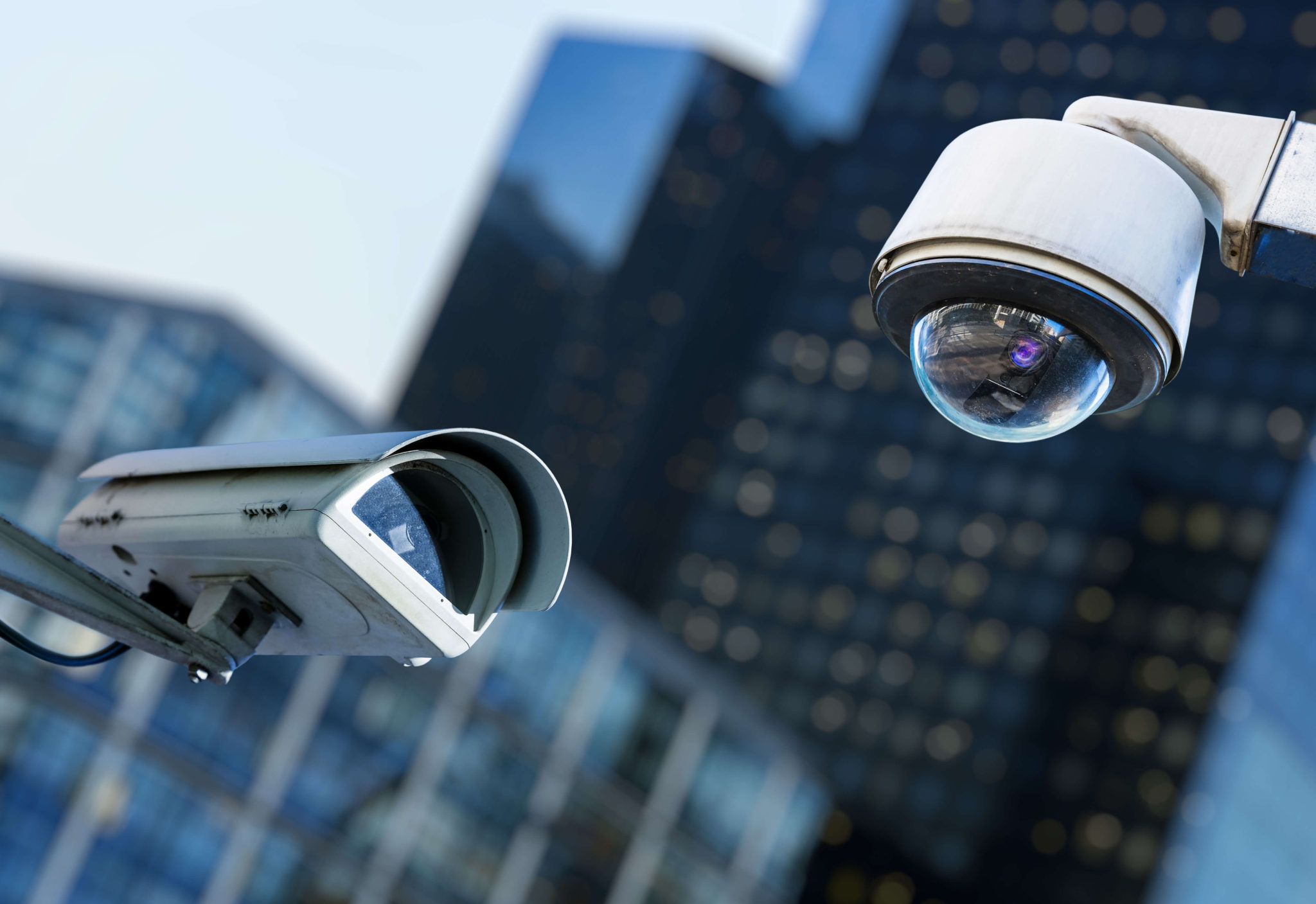

Home Security and Surveillance
How To Hack Into Security Cameras
Modified: March 6, 2024
Learn how to hack into security cameras and improve your home security and surveillance with our comprehensive guide.
(Many of the links in this article redirect to a specific reviewed product. Your purchase of these products through affiliate links helps to generate commission for Storables.com, at no extra cost. Learn more)
Introduction
Home security and surveillance systems provide peace of mind by protecting our homes and loved ones from potential threats. These systems have evolved over the years, becoming more advanced with features like motion detection, night vision, and even remote access. However, with the advancement in technology, the risk of these systems being hacked has also increased.
In this digital age, where everything is connected, it’s crucial to understand the vulnerabilities of security camera systems and take steps to protect them. This article aims to provide insights into various hacking techniques and ways to safeguard your security cameras.
Before we delve into the hacking techniques, it’s important to understand how security cameras work and the potential vulnerabilities they may have. Security cameras are typically connected to a local network or the internet and can be accessed via a user interface on a computer or smartphone.
These cameras often come with default usernames and passwords, which users are encouraged to change for enhanced security. Unfortunately, many users neglect to update this information, leaving their cameras susceptible to hacking.
Furthermore, security cameras may have firmware vulnerabilities that can be exploited by hackers. Firmware is the software that runs on the camera, controlling its functions and features. If the firmware is outdated or has security loopholes, attackers can gain unauthorized access to the camera.
Wireless security cameras are increasingly popular, providing convenience and flexibility in placing them anywhere within the range of the Wi-Fi network. However, wireless communication presents its own set of risks, as hackers can intercept the wireless signals and gain access to the camera feed.
Hacking security cameras can lead to serious consequences, such as privacy breaches, unauthorized surveillance, or even enabling criminals to disable the cameras for their nefarious activities. It’s imperative for homeowners and businesses to be knowledgeable about these hacking techniques and take proactive steps to protect their security systems.
In the next sections, we will explore various methods hackers use to compromise security cameras, and then we will discuss the measures you can take to secure and safeguard your camera systems.
Key Takeaways:
- Protect your security cameras by changing default credentials, updating firmware, securing your network, and implementing strong access control. Stay vigilant and educate users to maintain a robust security posture.
- Understanding security camera vulnerabilities and implementing strong security measures can greatly reduce the risk of unauthorized access and maintain the integrity of your camera systems. Stay proactive and prioritize cybersecurity for peace of mind.
Read more: How To Hack Into A Wired Security Camera
Understanding Security Cameras
Security cameras, also known as closed-circuit television (CCTV) cameras, are devices used for monitoring and recording activities in a specific area. They play a vital role in deterring theft, vandalism, and other criminal activities. Understanding how security cameras function is essential in recognizing their vulnerabilities and potential hacking risks.
Security cameras consist of several key components that work together to capture and transmit video footage. The main components include:
- Camera: This is the primary component of a security camera system. It captures video footage using image sensors and lenses. Cameras can be analog or digital, with the latter being more common nowadays.
- Video Recorder: The video recorder, also known as a digital video recorder (DVR) or network video recorder (NVR), is responsible for storing and managing the captured video footage. It may include features like motion detection, scheduled recording, and remote access capabilities.
- Monitor: The monitor displays the live or recorded video feed. It allows users to view the camera footage in real-time or review the recorded videos.
- Network Connection: Security cameras can be connected to a local area network (LAN) or the internet, enabling remote access and monitoring. The network connection allows users to view the camera feed from their smartphones, tablets, or computers.
Security cameras are typically placed in strategic locations to capture visual information. They can be mounted indoors or outdoors, depending on the surveillance requirements. Outdoor cameras are built to withstand harsh weather conditions and may have additional features like infrared lights for night vision.
Modern security cameras offer advanced functionalities such as high-definition video recording, pan-tilt-zoom capabilities, facial recognition, and even integration with smart home devices. While these features enhance security and convenience, they also increase the complexity and potential vulnerabilities of the system.
Hackers target security cameras for several reasons. In some cases, they seek to gain unauthorized access to the camera feed to spy on individuals or monitor activities covertly. In other instances, hackers may aim to disable the cameras to facilitate criminal activities or create a distraction during a physical break-in.
Now that we have a basic understanding of how security cameras operate, we can delve into the vulnerabilities that hackers exploit to compromise these systems. By understanding these vulnerabilities, we can take appropriate measures to strengthen the security of our security camera systems.
Identifying Vulnerabilities in Security Camera Systems
Before we can take steps to protect our security camera systems from hacking attempts, it’s crucial to identify the vulnerabilities that hackers exploit. By understanding these vulnerabilities, we can proactively implement countermeasures to enhance the security of our security cameras.
Here are some common vulnerabilities in security camera systems:
- Weak Passwords: One of the most common vulnerabilities is the use of weak or default passwords for accessing the security camera’s web interface or mobile application. Hackers can easily exploit weak passwords by using automated tools or simply guessing them. It is essential to choose strong, unique, and complex passwords for all camera accounts and regularly update them.
- Firmware Vulnerabilities: Security cameras run on firmware, which is essentially the software that controls their operations. Outdated or poorly maintained firmware can contain vulnerabilities that hackers exploit to gain unauthorized access to the camera system. Regularly updating the firmware with the latest patches and security updates is vital for mitigating such vulnerabilities.
- Default Settings: Manufacturers often provide default settings for their security cameras, including default usernames and passwords. Failure to change these default settings leaves the cameras at a higher risk of being hacked. It’s crucial to change default credentials to unique and strong ones immediately after installing the camera.
- Unencrypted Communication: Some security cameras transmit data over the network without encryption, making it relatively easy for hackers to intercept and access the camera feed. It’s important to ensure that the camera system uses encryption protocols like Secure Socket Layer (SSL) or Transport Layer Security (TLS) to secure the communication between the camera and the user’s devices.
- Network Vulnerabilities: Weak or insecure network configurations can expose security cameras to hacking attempts. It’s essential to secure the network by using strong passwords for Wi-Fi access, enabling network encryption, and keeping the network infrastructure up to date with the latest security patches.
- Third-Party Integrations: Security cameras often integrate with third-party applications or devices for added functionality. However, these integrations can introduce vulnerabilities if the third-party software or devices have security flaws. It’s crucial to thoroughly research and vet any third-party integrations to ensure they do not compromise the security of the camera system.
Identifying these vulnerabilities is the first step towards bolstering the security of your security camera systems. In the next sections, we will explore in detail the techniques hackers employ to exploit these vulnerabilities and gain unauthorized access to security cameras. By understanding these hacking techniques, you can take the necessary precautions to protect your camera systems from potential attacks.
Gathering Information about the Target Camera
Before launching a hacking attempt on a security camera, hackers gather information about the target camera to identify potential vulnerabilities. By understanding the system’s configuration, firmware version, and network setup, hackers can tailor their attack strategies and increase their chances of success.
Here are some common methods hackers use to gather information about a target camera:
- Online Research: Hackers may start by conducting online research to gather information about the specific model and brand of the target camera. They can search for product manuals, user forums, and security vulnerabilities related to the camera. This can provide them with valuable insights into the camera’s features, default settings, and potential vulnerabilities.
- Shodan: Shodan is a search engine specifically designed to find Internet of Things (IoT) devices, including security cameras. Hackers can use Shodan to identify publicly accessible cameras, view their IP addresses, and even detect vulnerabilities associated with the camera’s firmware version.
- Port Scanning: Hackers may perform port scanning on the target camera’s IP address to identify open ports and services running on those ports. This can provide them with information about the camera’s network configuration and potential entry points for exploitation.
- Social Engineering: Social engineering involves manipulating individuals to gather sensitive information. Hackers may pose as representatives from the camera manufacturer or a technical support team and contact users to collect information about their camera, such as firmware version and network setup. This tactic preys on unaware or gullible individuals who may unknowingly divulge critical information.
- Network Sniffing: If the communication between the camera and the user’s device is unencrypted, hackers can use network sniffing tools to intercept and analyze the network traffic. This can reveal valuable information about the camera’s configuration, credentials, and potential vulnerabilities.
By gathering information about a target camera, hackers can pinpoint its weaknesses and devise a tailored attack strategy. It is vital for camera owners to remain vigilant and take steps to protect their cameras from such attacks.
In the next sections, we will explore various hacking techniques that hackers employ to exploit the vulnerabilities in security cameras. By understanding these techniques, you can take proactive measures to safeguard your camera systems and prevent unauthorized access and surveillance.
Exploiting Weak Passwords
One of the most common and straightforward methods that hackers use to gain unauthorized access to security cameras is by exploiting weak passwords. Many users neglect to change the default usernames and passwords provided by the camera manufacturer, making it incredibly easy for hackers to gain control.
Hackers can employ several techniques to exploit weak passwords:
- Brute Forcing: Brute forcing involves using automated tools to systematically try different combinations of usernames and passwords until the correct one is found. Hackers have databases of commonly used passwords that they use in these attacks. They can also leverage personal information, such as birthdays or pet names, to try and crack passwords.
- Dictionary Attacks: Dictionary attacks involve using a precompiled list of commonly used passwords or dictionary words and systematically testing each one against a target system. Hackers often modify these words by adding numbers or special characters to increase the likelihood of success.
- Phishing: Phishing is a technique where hackers trick users into revealing their login credentials by sending them fraudulent emails or messages that appear legitimate. These messages often claim that there is a security issue with their camera system or prompt them to update their credentials. Unsuspecting users may unknowingly provide their login information, allowing hackers to gain access to their security camera.
- Social Engineering: Hackers may try to manipulate users into revealing their passwords through social engineering techniques. This could involve impersonating technical support personnel and asking users to provide their login credentials for verification purposes.
To protect your security camera system from password exploitation, it is crucial to follow best practices regarding password security:
- Change the default username and password immediately after setting up the camera.
- Use strong, unique passwords that include a combination of uppercase and lowercase letters, numbers, and special characters.
- Avoid using easily guessable information, such as personal details or common words, as passwords.
- Enable two-factor authentication, if available, to add an extra layer of security to your camera system.
- Regularly update your passwords and avoid reusing them across different accounts.
By implementing these measures, you can significantly reduce the risk of password exploitation and unauthorized access to your security cameras. Remember, the strength of your password plays a crucial role in ensuring the security of your camera system.
In the next sections, we will explore additional hacking techniques and ways to protect your security cameras from such attacks.
Read more: How To Hack Home Security Cameras
Brute Forcing Camera Credentials
Brute forcing camera credentials is a hacking technique where attackers use automated tools to systematically guess usernames and passwords until they successfully gain access to the security camera’s web interface or mobile application.
Here’s how the process of brute forcing camera credentials typically works:
- The attacker identifies the target camera and begins the brute forcing process by inputting a list of commonly used usernames. These usernames can include default admin usernames or common names associated with security camera systems.
- The attacker then uses an automated tool that generates a list of potential passwords. The tool systematically combines different characters, numbers, and symbols to create a large number of password combinations. The generated passwords often include common choices such as “123456,” “admin,” or variations of the target username.
- The brute forcing tool starts attempting each combination of username and password, submitting them to the camera’s login page or authentication API. The process continues until a successful login is achieved, or the tool exhausts all possible combinations.
Brute forcing camera credentials can be a time-consuming process, especially if the attacker is targeting a strong and unique password. However, many users still rely on weak or easily guessable passwords, making the process relatively faster and more feasible for hackers.
To protect your security camera system from brute force attacks, consider implementing the following measures:
- Strong Passwords: Use strong, unique passwords that include a combination of uppercase and lowercase letters, numbers, and special characters. Avoid using commonly used passwords or personal information that can be easily guessed.
- Account Lockouts: Implement account lockout policies that temporarily lock the user account after a certain number of failed login attempts. This can greatly impede attackers’ progress in brute forcing the camera credentials.
- Slow Down Mechanisms: Implement rate-limiting mechanisms that slow down the authentication process after a certain number of failed attempts. This introduces delays between login attempts, making it difficult for attackers to perform rapid and large-scale brute forcing attempts.
- Enable Captcha: Integrate captcha or similar mechanisms into the login process. Captcha challenges users to prove they are human by completing a task, which can help prevent automated brute force attacks.
- IP Whitelisting: Restrict access to the camera’s web interface or mobile application only to specific IP addresses or a range of trusted IP addresses. This blocks access attempts from unknown sources, further fortifying your camera’s security.
By implementing these security measures, you can significantly reduce the risk of brute force attacks and unauthorized access to your security cameras. It’s essential to prioritize the protection of your camera credentials to ensure the integrity and privacy of your camera system.
In the next sections, we will explore additional methods that hackers use to exploit security camera vulnerabilities, along with strategies to protect your cameras from such attacks.
Default Password Exploitation
Default password exploitation is a hacking technique that takes advantage of the fact that many security cameras are shipped with default usernames and passwords. These default credentials are typically well-known and readily available, making it incredibly easy for attackers to gain unauthorized access to the camera systems.
Here’s how default password exploitation works:
- The attacker identifies the make and model of the target camera and researches the default credentials that are commonly associated with it. This information can be found in user manuals, manufacturer websites, online forums, or even public databases.
- The attacker attempts to access the camera’s web interface or mobile application using the default credentials. Since many users neglect to change these defaults, the attacker often gains immediate access.
- Once authenticated, the attacker can manipulate the camera settings, view live streams, or even disable the camera entirely. This can pose serious security risks, such as unauthorized surveillance or disabling the camera’s functionality for legitimate users.
Default password exploitation is a significant concern because it relies on the negligence of users who fail to change the default credentials of their security cameras. Attackers exploit this complacency to gain easy access to vulnerable camera systems.
To protect your security camera system from default password exploitation, consider implementing the following measures:
- Change Default Credentials: Immediately change the default username and password provided by the camera manufacturer. Choose strong, unique passwords that are not easily guessable and ensure that usernames are also changed.
- Disable Default Accounts: Some cameras come with default accounts that cannot be deleted. If this is the case for your camera, disable or lock these default accounts to prevent unauthorized access. Create new accounts with unique credentials for all users.
- Regularly Update Passwords: Regularly update the passwords for all accounts associated with the security camera system. This helps mitigate the risk of compromised credentials, even if a default password exploitation attempt is made.
- Implement Account Lockouts: Enforce policies that lock user accounts after a certain number of failed login attempts. This prevents attackers from using automated tools to guess the credentials.
- Education and Awareness: Educate yourself and all users about the importance of changing default credentials and the potential risks associated with leaving them unchanged. Reinforce the message that default passwords are easily exploitable, and proactive steps must be taken to secure the camera system.
By following these security practices, you can significantly reduce the risk of default password exploitation and strengthen the overall security of your security cameras. Remember, a small effort to change default credentials can go a long way in protecting your camera systems from unauthorized access.
In the next sections, we will explore additional methods that hackers use to exploit security camera vulnerabilities, along with strategies to protect your cameras from such attacks.
Always ensure that you have proper authorization before attempting to access security cameras. Unauthorized access is illegal and can result in serious consequences.
Utilizing Backdoor Access
Backdoor access is a technique used by hackers to gain unauthorized access to security cameras by exploiting hidden or undocumented features or vulnerabilities in the camera’s software or firmware. Backdoors are intentionally or unintentionally created by manufacturers for various purposes, such as technical support or debugging, but they can be abused by attackers for malicious activities.
Here’s how backdoor access exploitation works:
- Attackers search for potential backdoor vulnerabilities in the camera’s firmware or software. These vulnerabilities can be intentional, resulting from deliberate implementation of backdoors by the manufacturer, or unintentional, resulting from coding errors or oversight.
- Once a backdoor is identified, the attacker gains access to the camera system using the hidden entry point. This access can allow the attacker to bypass authentication mechanisms and directly control various camera functions.
- With backdoor access, attackers can manipulate camera settings, disable security features, access live streams, or even launch further attacks on the network where the camera is connected.
Backdoor access can be a significant security concern because it provides attackers with a stealthy entry point into the camera system, bypassing conventional authentication measures. Since backdoors are often undocumented and hidden, their existence can go unnoticed for an extended period, allowing attackers to carry out their activities undetected.
To protect your security camera system from backdoor access exploitation, consider implementing the following measures:
- Regular Firmware Updates: Manufacturers often release firmware updates that contain security patches and bug fixes, including the closure of known backdoor vulnerabilities. Stay updated with the latest firmware releases to ensure that any existing backdoors are addressed.
- Security Research: Keep track of security advisories and research related to the camera model you are using. This can help you identify any potential backdoor vulnerabilities and take appropriate action to mitigate the risks.
- Vendor Reputation: Conduct thorough research on the camera manufacturer’s reputation for security practices and vulnerability disclosure. Choose brands that prioritize security and release timely patches for any identified vulnerabilities or backdoors.
- Regular Security Audits: Perform periodic security audits to identify any potential backdoors or vulnerabilities in your camera systems. This can involve engaging ethical hackers or security professionals to conduct comprehensive assessments and provide recommendations for strengthening security.
- Network Segmentation: Segment your network to isolate security cameras from other critical devices or systems. This can limit the potential impact of a security breach on your overall network infrastructure.
By implementing these security measures, you can reduce the risk of backdoor access exploitation and strengthen the overall security of your security camera systems. Remaining vigilant and proactive in addressing potential vulnerabilities is essential in maintaining the integrity and privacy of your camera systems.
In the next sections, we will explore additional methods that hackers use to exploit security camera vulnerabilities, along with strategies to protect your cameras from such attacks.
Exploiting Firmware Vulnerabilities
Exploiting firmware vulnerabilities is a common method used by hackers to gain unauthorized access to security cameras. Firmware is the software that runs on the camera, controlling its functionality and features. Outdated or poorly secured firmware can contain vulnerabilities that attackers can exploit to compromise the camera system.
Here’s how the exploitation of firmware vulnerabilities typically occurs:
- Attackers analyze the firmware of the target camera to identify any known vulnerabilities or weaknesses. They may explore official firmware releases, reverse engineer the firmware, or leverage security research conducted by others.
- Once vulnerabilities are identified, attackers develop or acquire exploit code that targets these specific weaknesses. Exploit code can exploit buffer overflows, injection attacks, or other programming flaws within the firmware.
- The attacker injects the exploit code into the camera system, taking advantage of the identified vulnerabilities. This allows them to gain elevated privileges or execute arbitrary commands on the camera.
- With control over the camera’s firmware, the attacker can manipulate settings, disable security features, or even install additional malware or backdoor access points for future access.
Exploiting firmware vulnerabilities can be devastating for security camera systems, as it provides attackers with significant control and access. It is crucial to stay proactive in addressing firmware vulnerabilities to minimize the risk of exploitation.
To protect your security camera system from firmware exploitation, consider implementing the following measures:
- Regular Firmware Updates: Stay updated with the latest firmware releases from the camera manufacturer. Firmware updates often contain security patches and bug fixes that address known vulnerabilities.
- Manufacturer Recommendations: Follow guidance from the camera manufacturer regarding best practices for firmware management and updates. Manufacturers may provide instructions on how to check for and install firmware updates for their specific camera models.
- Vendor Reputation: Conduct research to ensure that the camera manufacturer has a track record of promptly addressing and releasing patches for identified vulnerabilities. Choose brands with a strong commitment to security and timely firmware updates.
- Community Forums and Security Research: Participate in security-focused forums and communities dedicated to your camera model. Stay informed about any reported firmware vulnerabilities or security discussions related to your camera’s firmware.
- Segmentation and Isolation: Isolate your security camera network from critical systems or sensitive data to limit the impact of a potential breach. Segmenting the network can help contain any potential damage resulting from a compromised camera.
By implementing these security measures, you can significantly reduce the risk of firmware exploitation and enhance the overall security of your security camera system. Regularly updating firmware and staying informed about potential vulnerabilities and patches are critical steps in protecting your cameras from exploitation.
In the next sections, we will continue exploring additional methods that hackers use to exploit security camera vulnerabilities, along with strategies to protect your cameras from such attacks.
Wireless Camera Hacking
Wireless security cameras have gained popularity due to their convenience and flexibility in installation. However, they also present unique risks, as attackers can intercept wireless signals and gain unauthorized access to the camera feed. Wireless camera hacking involves exploiting vulnerabilities in the camera’s wireless communication to compromise its security.
Here’s how wireless camera hacking typically occurs:
- Attackers use specialized tools to scan for available wireless networks and identify security cameras operating on those networks. They may search for cameras with weak encryption or those using outdated wireless protocols that are susceptible to known vulnerabilities.
- Once a vulnerable wireless camera is identified, attackers attempt to intercept the wireless signals between the camera and the user’s device. They capture and analyze the wireless traffic to obtain sensitive information, such as login credentials or the camera’s live feed.
- Attackers may also attempt to perform a man-in-the-middle attack by impersonating the wireless access point. This can trick the camera or the user’s device into connecting to the attacker’s malicious network, giving the attacker full control over the camera’s communication.
- With access to the camera’s wireless communication, the attacker can view the camera feed, manipulate settings, or even disable the camera entirely. They may also use the camera as a pivot point to further infiltrate the network where the camera is connected.
To protect your wireless security cameras from hacking attempts, it is crucial to implement strong security measures:
- Use Strong Encryption: Ensure that your wireless camera system uses strong encryption protocols like WPA2 or WPA3. Weak or outdated encryption leaves the camera vulnerable to interception and unauthorized access.
- Change Default Encryption Settings: Many wireless cameras come with default encryption settings or may support older, less secure encryption protocols. Change these settings to use the strongest available encryption protocol and follow best practices for configuring your wireless network.
- Secure the Wireless Network: Secure your wireless network by using strong, unique passwords for Wi-Fi access. Regularly update passwords and enable network encryption to prevent unauthorized access to your wireless camera system.
- Network Segmentation: Segment your network to isolate the wireless camera system from other critical devices or systems. This helps contain any potential breach and limit access to the camera feed.
- Monitor Network Activity: Continuously monitor your network for any unusual activity, such as unauthorized access attempts or suspicious traffic patterns. Intrusion detection systems or network monitoring tools can help detect and respond to potential wireless camera hacking attempts.
By implementing these security measures, you can significantly reduce the risk of wireless camera hacking. Securing the wireless communication and staying vigilant in monitoring network activity are crucial steps in protecting your wireless security camera system.
In the next sections, we will continue exploring additional methods that hackers use to exploit security camera vulnerabilities, along with strategies to protect your cameras from such attacks.
Hacking via Remote Administration Tools (RATs)
Remote Administration Tools (RATs) are software applications that allow remote access and control of a computer or device. While RATs have legitimate uses for system administration and technical support, they can also be exploited by hackers to gain unauthorized access to security cameras and compromise their security.
Here’s how hacking via RATs typically occurs:
- Attackers search for security cameras that have vulnerabilities or weak security measures, such as default usernames and passwords or outdated firmware.
- Once a target camera is identified, the attacker gains access to the camera’s network or compromises a device on the same network segment.
- The attacker then deploys a RAT onto the compromised device or camera system. This RAT establishes a backdoor or remote connection, allowing the attacker to gain administrative control over the camera.
- With control over the camera, the attacker can manipulate settings, view the camera feed, disable security features, or even use the camera as a jumping-off point to further infiltrate the network.
Hacking via RATs can be particularly dangerous as it allows attackers to gain full control over the camera system remotely. This level of access gives hackers the ability to carry out various malicious activities without physical proximity to the camera.
To protect your security cameras from hacking attempts via RATs, consider implementing the following measures:
- Change Default Credentials: Immediately change the default usernames and passwords provided by the camera manufacturer. Choose strong, unique passwords for all camera accounts to prevent unauthorized access.
- Firmware Updates: Keep the camera’s firmware up to date with the latest security patches and improvements. Regularly check for firmware updates from the manufacturer and promptly apply them to mitigate known vulnerabilities.
- Network Segmentation: Isolate your security camera network from other critical systems or devices to limit the impact of a potential breach. Segmenting the network can help contain any compromise within the camera system.
- Network Monitoring: Utilize network monitoring tools to detect suspicious activity or unauthorized access attempts. Proactively monitor network traffic to identify any unusual patterns or connections to external IP addresses associated with known RATs.
- Identify and Block Suspicious IP Addresses: If you suspect an attack or notice suspicious IP addresses attempting to establish connections with your camera system, consider blocking or blacklisting those IP addresses to prevent further unauthorized access.
By implementing these security measures, you can significantly reduce the risk of hacking via RATs and enhance the overall security of your security camera system. Being proactive in securing your cameras against remote administration tool exploits is essential in maintaining the integrity and privacy of your camera systems.
In the next sections, we will continue exploring additional methods that hackers use to exploit security camera vulnerabilities, along with strategies to protect your cameras from such attacks.
Protecting Your Security Cameras from Hacking Attempts
As the security of our homes and loved ones relies on the integrity of our security cameras, it is crucial to take proactive measures to protect them from hacking attempts. By implementing strong security practices, you can greatly reduce the risk of unauthorized access and maintain the privacy and functionality of your camera systems.
Here are some essential steps to protect your security cameras:
- Change Default Credentials: Immediately change the default usernames and passwords provided by the camera manufacturer. Choose strong, unique passwords for all camera accounts to prevent unauthorized access.
- Regular Firmware Updates: Stay updated with the latest firmware releases from the camera manufacturer. Firmware updates often contain security patches and bug fixes that address known vulnerabilities. Keep your camera’s firmware up to date to protect against potential exploits.
- Secure Network Configuration: Ensure that your camera system is connected to a secure network. Use strong, unique passwords for Wi-Fi access and enable network encryption like WPA2 or WPA3 to prevent unauthorized access to your camera’s network.
- Network Segmentation: Segment your network to isolate the security camera system from other critical devices or systems. This helps contain any potential breach and minimizes the impact of a compromised camera on your overall network infrastructure.
- Disable Unnecessary Services: Review your camera’s settings and disable any unnecessary services or features that could potentially introduce security vulnerabilities. Only enable the features you need and regularly review and update these settings as necessary.
- Implement Strong Access Control: Utilize strong access control mechanisms such as two-factor authentication (2FA) or multi-factor authentication (MFA) to add an extra layer of security. This requires additional verification for accessing your camera system, making it harder for hackers to gain unauthorized access.
- Regularly Monitor Camera Activity: Monitor your camera system for any strange or suspicious activities, such as unexpected login attempts or unauthorized access. Implement log monitoring and intrusion detection systems to detect and respond to potential security incidents promptly.
- Educate Users on Security Best Practices: Educate all users on the importance of good security practices, such as creating strong passwords, updating firmware, and being cautious about phishing attempts or suspicious emails. Promote a culture of security awareness to mitigate the risk of human error.
- Physical Security: Protect the physical access to your cameras by placing them in secure locations and using tamper-proof mounting solutions. This prevents unauthorized physical access that could compromise the camera’s security.
By implementing these security measures and maintaining the vigilance to keep your camera systems secure, you can greatly reduce the risk of hacking attempts. Remember to stay informed about the latest security practices, vulnerabilities, and security patches related to your camera model.
In an ever-evolving digital landscape, protecting your security cameras is an ongoing process. Regularly assess and update your security measures to stay one step ahead of potential threats and ensure the safety and privacy of your home or business.
By following these guidelines, you can minimize the risk of unauthorized access to your security cameras and maintain the integrity of your surveillance system.
Remember, investing in cybersecurity measures for your security cameras is not just a luxury; it’s a necessity for the protection of your home and loved ones.
Conclusion
As technology continues to advance, so does the risk of security camera hacking. Protecting your security cameras from hacking attempts is of utmost importance to ensure the safety and privacy of your home or business. By understanding the vulnerabilities that hackers exploit and implementing strong security measures, you can significantly reduce the risk of unauthorized access and maintain the integrity of your camera systems.
Throughout this article, we explored various hacking techniques that attackers use to compromise security cameras. We discussed the importance of understanding security camera functionality, identifying vulnerabilities, and gathering information about the target camera. Additionally, we dove into the exploitation of weak passwords, default credentials, firmware vulnerabilities, and wireless communication, as well as the utilization of backdoor access and remote administration tools.
To protect your security cameras from hacking attempts, remember to change the default credentials, regularly update firmware, secure your network configuration, segment your network, disable unnecessary services, and implement strong access control mechanisms. Additionally, monitoring camera activity, educating users on security best practices, and ensuring physical security are vital for maintaining a robust security posture.
While no system is entirely impervious to attack, implementing these security measures greatly strengthens the security of your security cameras and minimizes the risk of exploitation. However, it is essential to stay vigilant, continuously educate yourself and your users, and keep up-to-date with the latest security practices and vulnerability disclosures.
By prioritizing the protection of your security cameras, you are taking a proactive approach in safeguarding your home, family, or business. Remember, investing in cybersecurity for your security cameras is an investment in peace of mind and ensuring the privacy and well-being of those in your care.
By following the guidelines presented in this article, you can fortify the security of your security camera systems and maintain a strong defense against potential hacking attempts. Together, let’s create a more secure environment for our homes, businesses, and loved ones.
Frequently Asked Questions about How To Hack Into Security Cameras
Was this page helpful?
At Storables.com, we guarantee accurate and reliable information. Our content, validated by Expert Board Contributors, is crafted following stringent Editorial Policies. We're committed to providing you with well-researched, expert-backed insights for all your informational needs.
